20 Types of Tiny Flowers to Fill Your Garden This Year

Good things do come in small packages, especially when it comes to flowers! While we love the bold statement of a dahlia or stunning complexity of coxcomb flowers, we also adore the teeniest, tiniest flowers. These little beauties add an ethereal fairy-tale like feel to any garden, whether it's a tiny urban plot or a sprawling country garden.
Tiny flowers are appealing when planted in masses and displayed in hanging baskets, window boxes, and containers or in rock gardens or when used as edging for walks. To get the most visual impact, plant tiny flowers where they can be enjoyed up-close so you can appreciate their petite beauty, or plant them in groupings to make a statement in garden beds and mixed borders.
Many tiny flowers are perennials which will give you years of reliable color. Just make sure to choose plants that can withstand winters in your USDA Hardiness Zones (find yours here), and water them well to help them get established.
Despite their diminutive size, many tiny flowers also support pollinators and attract beneficial bees, wasps, and hummingbirds to your backyard. So, that's one more very good reason to add these little gems to your garden!
More garden stories you'll love:
Ahead, our favorite types of tiny flowers to fill your garden, containers, window boxes and hanging baskets:
Sweet Alyssum
Sweet alyssum is a low-growing annual with tiny white, pink or purple flowers that pollinators love. The flowers are sweetly-scented and look best when cascading over the edges of window boxes and containers. They’re also tolerant of a light frost so you’ll have flowers from planting until late fall.
Bloom time: Spring to late fall
USDA Hardiness Zones: Annual
Read more: 25 Garden Plans to Inspire You
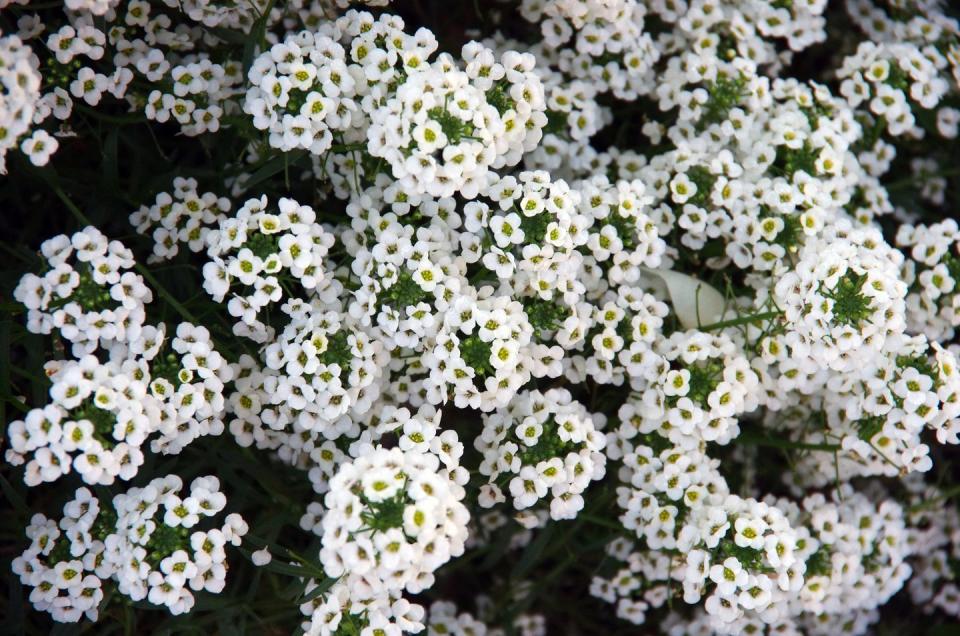
Chamomile
Chamomile has the sweetest daisy-like flowers with soft, delicate foliage. You’ll find two types: German chamomile, which is an annual, and Roman chamomile, which is a perennial. Bonus: Both types can be used fresh or dried for making tea or used as a garnish; snip off the flowers when in full bloom and dry or freeze for longer storage.
Bloom time: Early to mid-summer
USDA Hardiness Zones: 4 to 9, or annual
Read more: How to Grow Chamomile
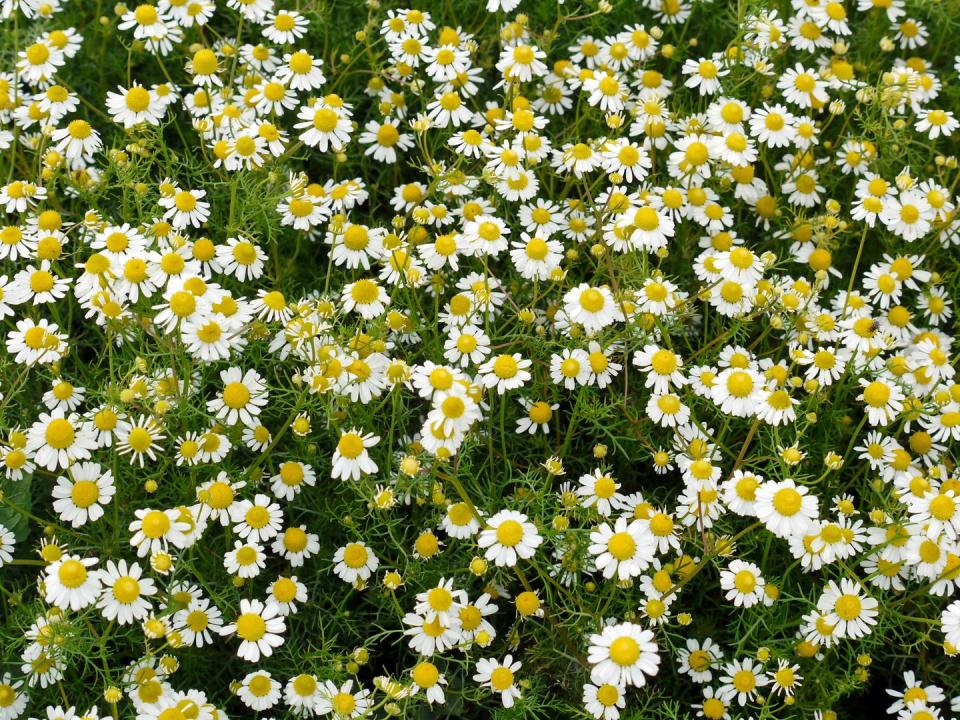
Lily of the Valley
This charming perennial has tiny stems of bell-shaped flowers with a sweet fragrance. The foliage remains all season long. Make sure to plant this where there’s a natural border, such as between the house and sidewalk because it has a tendency to get aggressive and take over an area quickly.
Bloom time: Late spring
USDA Hardiness Zones: 3 to 7
Read more: 30 Groundcover Plants For Your Backyard
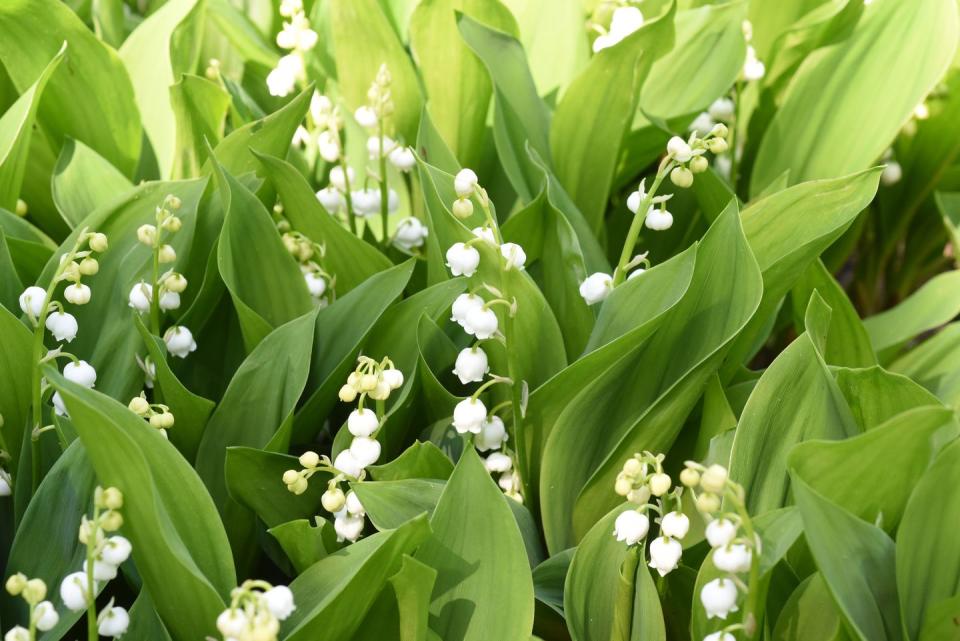
Pansy and Viola
These cool-weather annuals have adorable funny-faced markings in every color you can imagine. Some types drop seeds and pop up again next spring. They tend to fade when hot weather arrives, but some varieties will perk up again in the fall.
Bloom time: Spring and fall
USDA Hardiness Zones: Annual
Read more: 30 Best Spring Flowers to Plant in Your Garden

Forget-Me-Not
These tiny blue flowers are a favorite for cottage gardens. But make sure to plant the native species: Mysotis laxa, M. macrosperma, M. verna, and M. alpestris. The non-native species Mysotis sylvatica is considered invasive and should not be planted in much of the country or only planted in containers so you can prevent spread.
Bloom time: Spring
USDA Hardiness Zones: 3 to 8
Read more:How to Grow Forget-Me-Not Flowers

Baby's Breath
Baby’s breath is a favorite of florists, but it also makes a lovely cutting garden plant. There are both annuals and perennials. Some types are considered invasive in some regions so do some research before planting.
Bloom time: Summer to early fall
USDA Hardiness Zones: 3 to 9, annual
Read more: How to Grow An At-Home Cutting Garden
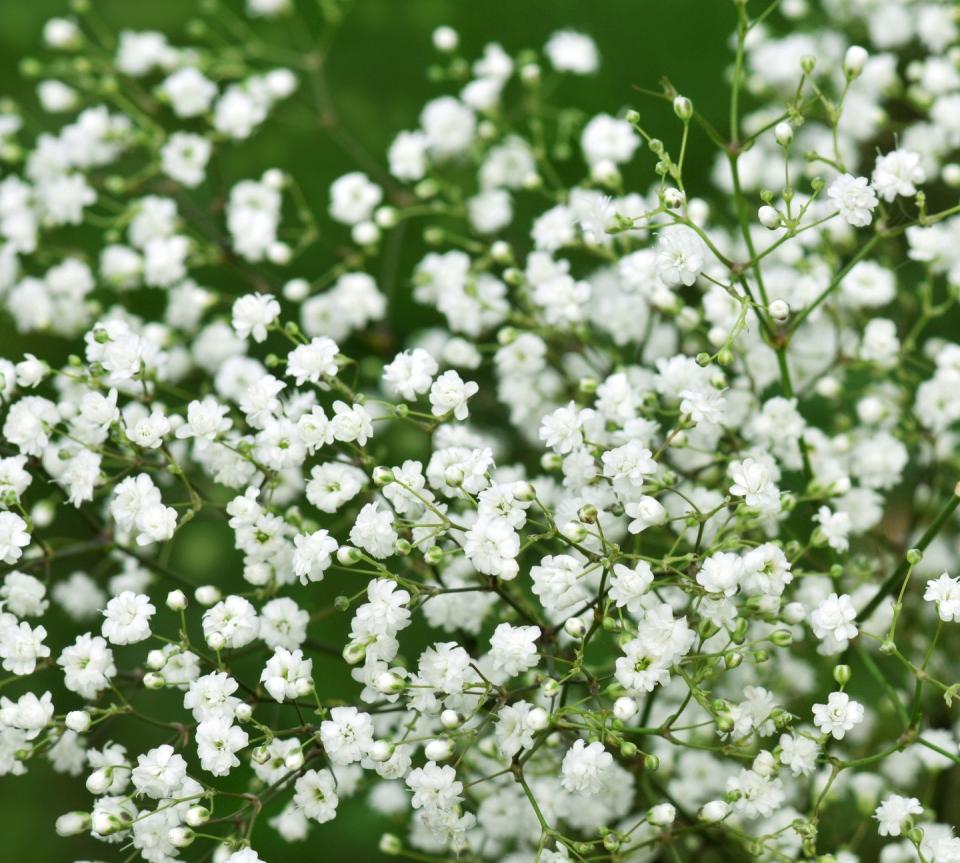
Lobelia
Lobelia comes in intense and striking shades of deep purple, blue, pink and white and looks lovely spilling over the sides of containers. This annual prefers cool weather, so it tends to get leggy in the heat of summer. A quick trim back may help rejuvenate it so that it will bloom again in fall.
Bloom time: Spring and fall
USDA Hardiness Zones: Annual
Read more: 25 Best Annual Flowers for Your Yard
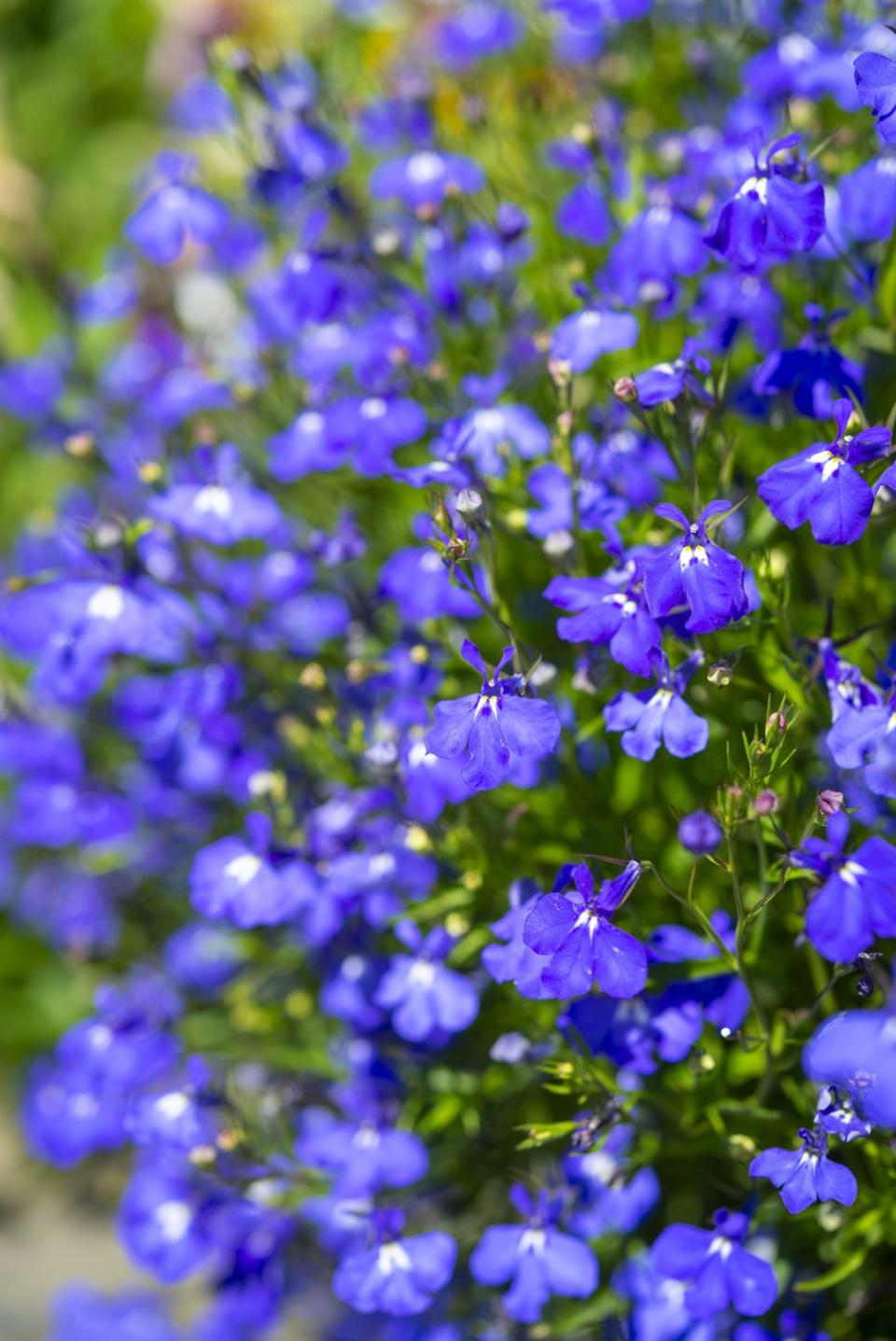
Rock Cress
Rock cress is a low-growing perennial that looks wonderful as a border plant, in rock gardens, or containers. The foliage is topped with gorgeous mats of pink, purple or white flowers that attract pollinators.
Bloom time: Late spring to summer
USDA Hardiness Zones: 4 to 9

Snow-in-Summer
Wooly silver foliage and masses of white blooms make snow-in-summer a lovely low-growing perennial for beds and rock gardens in temperate climates because it does not do well in hot, humid summers. As the name suggests, the abundance of blooms resemble drifts of snow.
Bloom time: Spring to early summer
USDA Hardiness Zones: 3 to 8
Read more: 30 Best Perennial Plants for Years of Beauty

Creeping Phlox
Low-growing foliage is covered in brightly-colored flowers in early to late spring. It’s a handsome groundcover plant and does especially well on hillsides.
Bloom time: Late spring
USDA Hardiness Zones: 3 to 9

Sweet Woodruff
Oodles of teeny white flowers atop semi-evergreen foliage make sweet woodruff a lovely option on slopes and under trees. It’s a vigorous grower in the right conditions.
Bloom time: Spring
USDA Hardiness Zones: 4 to 9

Blue Star Creeper
A carpet of blue flowers appears all summer long on this low-growing groundcover. It will tolerate low to moderate foot traffic, too.
Bloom time: Summer
USDA Hardiness Zones: 6 to 8

Cranesbill
Also called perennial geranium, this handsome perennial has scalloped leaves and beautiful, elegant flowers, that slightly resemble a crane’s bill, in late spring and early summer. It’s especially resistant to deer and rabbits because of the spicy scent of its foliage.
Bloom time: Late spring to early summer
USDA Hardiness Zones: 3 to 9

Thyme
Thyme is an easy-to-grow herb that has tiny white, pink or purple flowers that pollinators adore. There are many different types, including creeping varieties and more upright types, but they all tolerate poor soil and heat especially well.
Bloom time: Late spring
USDA Hardiness Zones: 5 to 9
Read more: Everything You Need to Know to Grow an Herb Garden

Bugleweed
Bugleweed forms a low-growing mat of foliage that may be green, burgundy or variegated. The tiny purple flowers appear in late spring. But be aware that bugleweed is considered invasive in some regions.
Bloom time: Late spring
USDA Hardiness Zones: 4 to 10

Heather
This compact evergreen perennial does well in tough spots, such as on slopes. These shrubby plants are often confused with a similar plant, heath. Both heather and heath are in the same plant family (Ericaceae) and look alike with similar needs, but heather does better in cold climates. Depending on the variety, it blooms in winter or spring to summer
Bloom time: Winter, spring or summer
USDA Hardiness Zones: 5 to 7
Read more: How to Grow Heather

Siberian Bugloss
This stunning perennial is lesser-known but deserves a place in your garden. With silvery-streaked heart-shaped foliage that grows in a mounded shape, and teeny bright blue flowers, it’s a gorgeous addition to the shade garden.
Bloom time: Late spring
USDA Hardiness Zones: 3 to 8
Read more: The Best Shade-Loving Perennials for Your Garden

Heuchera
Mounded foliage in every color of the rainbow from chartreuse to deepest burgundy make this perennial a must-have. Also known as coral bells for its spikes of tiny flowers, it attracts hummingbirds when in bloom.
Bloom time: Mid-summer
USDA Hardiness Zones: 4 to 9

Pulmonaria
Also known as lungwort because it was once thought to treat lung ailments, this handsome plant has bright purple or hot pink flowers in late spring atop mounds of spotted foliage. It’s truly a standout perennial.
Bloom time: Late spring
USDA Hardiness Zones: 3 to 9

Dianthus
Low-growing mats of green are covered in bright pink, white or purple fragrant blooms in late spring to early summer with some rebloom throughout the summer. This plant is found in both annual and perennial varieties.
Bloom time: Late spring to early summer
USDA Hardiness Zones: 3 to 9

You Might Also Like


